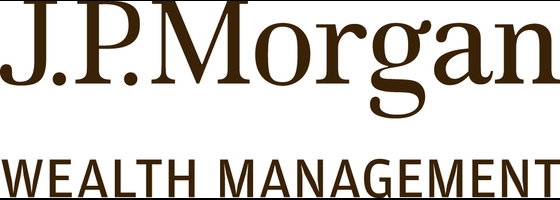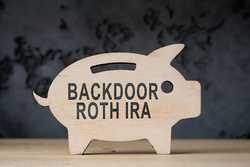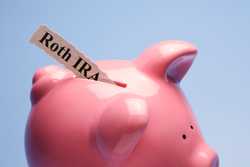Best ETFs to Invest in February 2025


Our evaluations and opinions are not influenced by our advertising relationships, but we may earn a commission from our partners’ links. This content is created by TIME Stamped, under TIME’s direction and produced in accordance with TIME’s editorial guidelines and overseen by TIME’s editorial staff. Learn more about it.
An exchange-traded fund (ETF) lets the investor own a number of different securities within one investment. As such, it is a good way to help diversify a portfolio. An ETF is less expensive than owning a mutual fund, which does something similar, because it is passively rather than actively managed and thus charges lower fees. In addition, it requires a smaller initial investment amount. An ETF generally is linked to a market index, such as the S&P 500, can be traded during market hours, and allows you to buy a single share—all unlike a mutual fund.
ETFs have become one of the most popular investments of the 21st century. With thousands of funds from which to choose, they make it easy to build an investment portfolio with very little money up front. However, it’s hard to know exactly which ETFs top that group. We’ve reviewed hundreds from dozens of companies. Here’s a succinct list of the best ETFs broken down by investing category.

INVESTMENT AND INSURANCE PRODUCTS ARE: NOT A DEPOSIT • NOT FDIC INSURED • NO BANK GUARANTEE • MAY LOSE VALUE
Bonds are an essential part of a well-diversified investment portfolio, providing stable income with less volatility than most equity investments. The top bond ETFs offer high yields, a variety of highly rated bonds, and low fees.
The Vanguard Total Bond Market ETF offers a high yield while holding thousands of investor-grade U.S. bonds. The fund holds mostly U.S. government bonds and treasuries, with an average effective maturity term of 8.5 years. The fund tracks the Bloomberg U.S. Aggregate Float Adjusted Index and has an extremely low expense ratio of only 0.03%.
The Vanguard International Bond Market ETF holds mostly medium-term international bonds from several markets. The fund is composed of government bonds and investor-grade corporate bonds from all around the world, giving investors global exposure to multiple debt markets. It comes with a low 0.07% expense ratio and tracks the Bloomberg Global Aggregate ex-USD Float Adjusted RIC Capped Index (USD Hedged.
The Schwab Municipal Bond ETF offers a tax-advantaged approach to fixed-income investing. The fund holds municipal bonds from several different states, yielding federal tax-free income as well as the potential to save on state taxes. The low 0.03% expense ratio and monthly distributions make it a desirable tax-free income ETF.
Real estate ETFs allow you to invest in resident and commercial real estate without the hassle of collecting rent or unclogging toilets. You can also invest in mortgages and mortgage bonds, allowing you to become the lender. Here are a few of the top real estate ETFs available today.
This Vanguard Real Estate ETF is the gold standard for low-fee, broadly diversified commercial real estate investing. The fund invests in mostly commercial real estate investment trusts (REITs)—with a small weighting in residential REITs—and aims to track the MSCI US Investable Market Real Estate 25/50 Index. The expense ratio is a low 0.12%, making it one of the most cost-effective real estate ETFs available.
The iShares Mortgage Real Estate ETF offers broad exposure to commercial and residential mortgages. The fund holds more than 30 REITs that invest in commercial and residential mortgages, offering quarterly income and high yields. The fund comes with a 0.48% expense ratio.
If you’re looking for a more stable investment than the stock market, finding quality fixed-income ETFs may fit the bill. The top fixed-income ETFs offer regular distributions, high yields, and low fees.
The Vanguard Mortgage-Backed Securities ETF offers exposure to a wide range of commercial and residential mortgages. Most of them are agency-backed mortgages through Fannie Mae, Freddie Mac, and Ginnie Mae. This ETF provides solid yield with the low risk of investing in government mortgage-backed securities. The fund comes with a low 0.04% expense ratio and tracks the Bloomberg Global Aggregate U.S. MBS Float Adjusted Statistics Index
If you’re looking for a risk-free investment, the SPDR Portfolio Intermediate Term Treasury ETF offers access to a mix of U.S. Treasuries within a single fund. With maturity dates ranging from three to 10 years, this fund offers a good blend of medium-term T-Bonds for fixed-income investors. With yields above a 4.00% annual percentage yield (APY) on many of the holdings, the yield to maturity is 4.38% as of March 18, 2024. It comes with a generously low 0.03% expense ratio and tracks the Bloomberg 3-10 Year U.S. Treasury Index.
The iShares iBoxx $ High Yield Corporate Bond ETF offers a higher yield than most fixed-income products, investing in corporate bonds with short durations and high interest rates. The yield to maturity was 7.78% as of March 18, 2024, and average maturity is 4.42 years. High yield bond funds do come with a higher risk of default on the underlying loans, but they can earn higher returns over short holding periods. The fund has a 0.49% expense ratio.
Investing in commodities can help you diversify outside traditional markets and gain exposure to investments such as oil, agriculture, and precious metals. Commodity ETFs own the underlying assets or purchase futures contracts to give you price exposure to a certain commodity.
SPDR Gold Trust is the largest spot gold ETF available today, with nearly $58 billion in assets under management as of March 18, 2024. This ETF holds physical gold bullion for all outstanding shares, with more than 26 million ounces of gold held within the trust as of March 18, 2024. If you want direct exposure to the spot price of gold, this ETF is one of the best options available. The fund has a 0.40% expense ratio.
The Invesco DB Agriculture Fund gives direct exposure to the price of certain agricultural products, such as coffee, cocoa, sugar, live cattle, and corn. This is achieved by holding futures contracts with U.S. Treasuries as collateral. The fund aims to track the DBIQ Diversified Agriculture Index and, as of March 18, 2024, provides a high yield of 4.33% APY while offering a net expense ratio of 0.85%.
This fund tracks the Energy Select Sector Index and holds a wide range of oil and gas and other energy companies. It’s composed mostly of large oil companies, such as Exxon Mobil, Chevron, and ConocoPhillips, and has a high yield of over 3.5% APY. It comes with a low expense ratio of 0.09%.
Investing in currency is essentially a hedge that a specific currency will outperform another currency. Most currency investing happens in futures contracts between currency pairs (such as U.S. dollars and Euro), with a bet that one or the other will outperform. Currency ETFs allow you to invest in alternative currencies (such as Bitcoin) or currency futures contracts.
Bitcoin has become one of the most popular currencies to invest in and, with the recent approval of Bitcoin spot ETFs, there has been significant interest in this asset class. A low-fee Bitcoin ETF from iShares allows investors to put money in Bitcoin without actually holding it. The iShares Bitcoin Trust has nearly $16 billion in net assets as of March 18, 2024, and a reasonable expense ratio of 0.25%.
If you believe the U.S. dollar will remain strong, the WisdomTree Bloomberg U.S. Dollar Bullish Fund may be a good option to diversify your portfolio. It holds futures contracts that increase in value if the dollar continues to rise in value compared with foreign currencies. The expense ratio is 0.50%.
Investing in equity ETFs gives you access to a basket of stocks within a single fund for a very modest fee. Most equity ETFs track stock market indices, providing diversification across a market sector—or even the entire stock market.
One of the most popular ETFs in the world, Vanguard’s S&P 500 ETF tracks the famous S&P 500 index and has a low 0.03% expense ratio. With low turnover and a market-cap-weighted approach, this fund offers an efficient way to own the largest companies in the U.S. stock market. The fund holds just over $1 trillion in assets as of March 18, 2024, and is diversified across most stock market sectors.
If you want to add international equities to your portfolio, Vanguard’s Total International Stock ETF charges a low fee to own the top companies outside of the U.S. The fund tracks the FTSE Global All Cap ex US Index and holds over 8,000 international stocks. It comes with a 0.08% expense ratio as of March 18, 2024.
The Invesco QQQ ETF is a popular growth-focused fund that owns the 100 largest nonfinancial companies in the Nasdaq. It holds most of the popular tech companies and is more volatile than a standard total market or S&P 500 index fund. If you’re looking to add more tech into your portfolio, QQQ is a solid choice and comes with a reasonable 0.2% expense ratio.
Many companies have embraced sustainability and “green” principles in how they operate, and there are now ETFs that hold stocks in sustainable companies. Many of these companies follow environmental, social, and governance (ESG) and socially responsible investing (SRI) principles.
The iShares ESG Screened S&P 500 ETF gives investors access to the S&P 500, but it avoids companies that do not comply with certain ESG standards. Specifically, the fund screens out companies involved with controversial weapons, small arms, tobacco, oil sands and shale energy, thermal coal, and fossil fuel reserves. It comes with a low expense ratio of 0.08%.
The iShares Global Clean Energy ETF holds stocks of companies that eschew using non-clean energy sources or production. The screen includes removing companies involved in controversial weapons, small arms, military contracting, tobacco, thermal coal, oil sands, shale energy, and arctic oil and gas exploration. As a global ETF it owns stocks both in the U.S. and outside of the U.S. The expense ratio is 0.41%.
For short-term investors looking for a more aggressive investing approach, leveraged ETFs offer a way to amplify the underlying investments.
Note: Leveraged ETFs are designed to amplify daily returns by using futures contracts, swaps, and borrowed funds. If you plan on holding these investments for more than one day, you can amplify your losses (or gains) considerably. These funds are for short-term investments, not long-term portfolio assets.
If you’re interested in investing in ETFs that offer a balanced approach or additional diversification, here are a few alternatives to consider for 2024:
To compile our list of the best ETFs, we found the top funds by market capitalization in each respective fund category. We then narrowed the list based on a combination of factors, including expense ratio, historical performance, and investing approach.
A majority of funds in this list offer passive management and low fees, and the few actively managed funds have a proven track record with fees that are on par with industry benchmarks.
Choosing the right ETFs for your investment portfolio requires understanding your financial goals, investing time horizon, and personal risk tolerance. You’ll want to detail each of these before putting together your desired investing plan.
If you’re not comfortable doing this yourself, working with a fee-only fiduciary can help you put together an investing road map. This may include understanding your current finances, revealing how much you can invest, and choosing ETFs that help support your financial goals.

Find the right financial advisor with WiserAdvisor
Find the right financial advisor with WiserAdvisor
Once you have an overall investment plan, you can build an investment portfolio, choosing ETFs that offer the risk and return profile you want. This might include a balance of equity and bond ETFs, as well as other asset classes and market sectors.
It’s important to follow the performance of an asset mix of your portfolio over time to ensure that you’re on track toward your goals. Using tools such as Empower Personal Dashboard allows you to see all of your investments in one place for free and compare the performance and fees with industry benchmarks.
While ETFs are a popular, low-cost way to invest, they are not the only investment option to consider. There are several other ways to choose investments for your portfolio. Here are a few alternatives to ETFs.
Mutual funds and ETFs are similar in that they own a basket of securities and offer instant diversification within a single fund. However, while mutual funds are typically actively managed and have high fees, ETFs are usually passively managed, tracking a given market index. Mutual funds generally also have high minimums, while ETFs allow you to invest for just the price of one share.
Mutual funds cannot be traded while the market is open; rather, they are bought and sold at the end of the trading day. ETFs can be bought and sold just like an individual stock, making them a more liquid investment. Overall, ETFs and mutual funds serve similar purposes with differing approaches and limitations.
Index funds are a type of mutual fund that tracks a market index (such as the S&P 500). Most ETFs are similar in that they track market indices, but not all ETFs are index funds. Index funds also cannot be traded during market hours, while ETFs can, and index funds may have a high minimum investment, while ETFs let you purchase a single share.
Stocks are equity ownership in a company, while ETFs are funds that own securities such as stocks, bonds, or other assets. Both stocks and ETFs can be traded during market hours, and both let you purchase a single share with no minimum investment requirements. Owning individual stocks is seen as a riskier investment than ETFs, which add diversification and lower risk by allowing you to own up to hundreds (or even thousands) of assets within a single fund.
Bonds are debt securities that are typically loans to government or corporate entities. Each bond has a set maturity date and interest rate, paying out distributions in the form of interest payments. Bond ETFs simply own a pile of bonds within a single low-cost fund. You can spread your risk and diversify your bond holdings with a bond ETF, while owning single bonds may pose more risk, depending on the rating.
ETFs are a type of investment fund that allows you to own a basket of securities within a single investment. Most ETFs track a specific market index and are passively managed, offering lower fees than actively managed mutual funds. ETFs also can be traded during market hours, making them more flexible than their mutual fund counterparts.
ETFs are first registered with the Securities and Exchange Commission (SEC), after which they purchase the underlying assets that will make up the fund. They are then listed on a stock exchange for trading, with prices typically set low to make them more accessible to investors.
The value of an ETF rises and falls by tracking the values of the underlying investments. There may also be a difference in price between the market price and net asset value (NAV) of the fund due to supply and demand forces in the market.
You can invest in ETFs through most major online brokerages and investing apps. If you’re looking to invest in a specific ETF, it’s best to open an account with the ETF issuer, such as Vanguard or Schwab.
If you use an investing app, many offer access to ETFs from a wide range of issuers and may even allow you to purchase fractional shares of the fund. Apps such as Robinhood and Public let you invest in ETFs for less than $10. You can open an account, choose your ETFs, and place a trade to purchase the funds you desire.
To purchase an ETF you must open an account with an investment broker or through an investing app. You’ll need to provide your personal and financial information, such as name, address, email address, and Social Security number.
Once your account is open and you’ve deposited funds into it, you can place a trade to buy an ETF. In most cases you select your ETF and set a dollar amount to purchase. In some apps you’ll be required to purchase a whole share of the ETF, which means purchasing the current market value of a single share.
Finding the right ETFs to add to your investment portfolio can help you grow your wealth, but picking ETFs because they are popular or have great recent returns can set you up for failure. Before you choose any investments, review your financial goals, time horizon, and risk tolerance to make sure you build a plan you can stick to through the ups and downs of the market. If you’re not confident in creating a financial plan on your own, you should try working with a licensed financial advisor to do so.
ETFs are one of the best investments for beginners due to low fees, instant diversification, and passive management (in most cases). However, ETFs do come with the risk of loss, so it’s important to understand which investments the ETF holds before investing. You’ll want to review your financial goals, investing time horizon, and risk tolerance before investing in any ETF.
ETFs are one of the best investments available for long-term investors who want access to low-cost funds that hold a variety of assets. ETFs offer instant diversification by holding dozens or even hundreds of assets within a single fund.
Most are passive investment funds, offering low fees and better performance than many actively managed funds. Still, it’s important to review your financial goals and risk profile to choose the right ETFs for your portfolio.
There are dozens of ETF trading apps and brokers from which to choose. For active traders, platforms such as Tradestation offer a suite of tools and charts for the most advanced trading setups along with low trading fees. For most casual traders, platforms such as M1 Finance and Robinhood allow you to buy and sell ETFs using a simple trading interface. It’s a good idea to review the top trading platforms to find the one that fits your needs.
The information presented here is created by TIME Stamped and overseen by TIME editorial staff. To learn more, see our About Us page.



